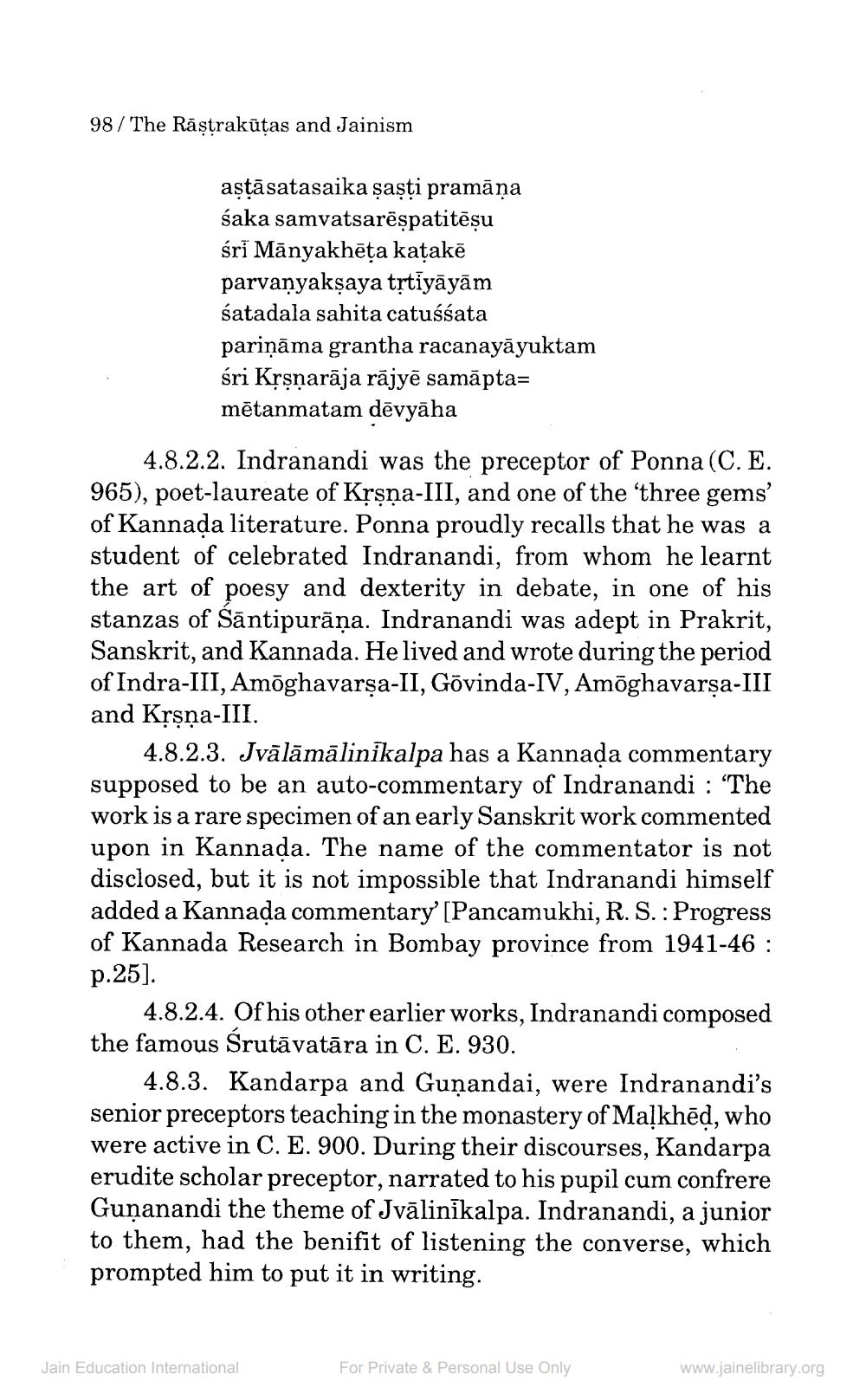________________
98/ The Răstrakūtas and Jainism
astāsatasaika şaşti pramāņa saka samvatsarēspatitēșu sri Mānyakhēta kațakē parvanyakşaya tặtiyāyām satadala sahita catussata pariņāma grantha racanayāyuktam śri Krsnarāja rājyē samāpta= mētanmatam dēvyāha
4.8.2.2. Indranandi was the preceptor of Ponna (C.E. 965), poet-laureate of Krsna-III, and one of the 'three gems' of Kannada literature. Ponna proudly recalls that he was a student of celebrated Indranandi, from whom he learnt the art of poesy and dexterity in debate, in one of his stanzas of Šāntipurāņa. Indranandi was adept in Prakrit, Sanskrit, and Kannada. He lived and wrote during the period of Indra-III, Amõghavarşa-II, Govinda-IV, Amõghavarşa-III and Krşņa-III.
4.8.2.3. Jvālāmālinikalpa has a Kannada commentary supposed to be an auto-commentary of Indranandi : "The work is a rare specimen of an early Sanskrit work commented upon in Kannada. The name of the commentator is not disclosed, but it is not impossible that Indranandi himself added a Kannada commentary'[Pancamukhi, R. S.: Progress of Kannada Research in Bombay province from 1941-46 : p.25].
4.8.2.4. Of his other earlier works, Indranandi composed the famous Śrutāvatāra in C. E. 930.
4.8.3. Kandarpa and Gunandai, were Indranandi's senior preceptors teaching in the monastery of Małkhēd, who were active in C. E. 900. During their discourses, Kandarpa erudite scholar preceptor, narrated to his pupil cum confrere Gunanandi the theme of Jvālinikalpa. Indranandi, a junior to them, had the benifit of listening the converse, which prompted him to put it in writing.
Jain Education International
For Private & Personal Use Only
www.jainelibrary.org




